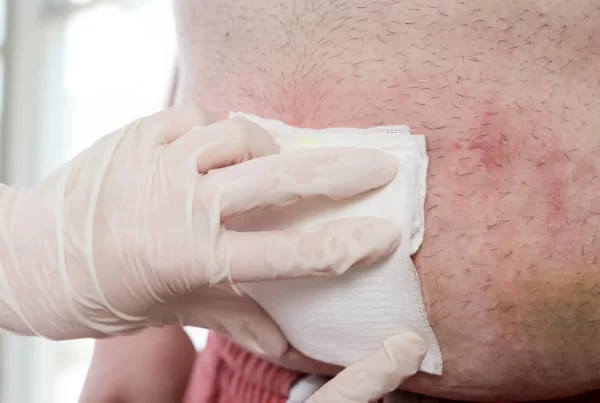Diabetes is defined by the American Diabetes Association as the body’s inability to either effectively produce or use insulin to maintain glucose levels in your body. When your body is no longer able to maintain this balance by itself, then you may have diabetes.
Diabetes is one of the common non-communicable diseases (NCD) in the modern world. It affects millions and within Malaysia, an estimated 3.9 million adults are diabetics. The dangers of diabetes don’t just stop at imbalanced glucose levels. Let’s take a look at some of the complications that can arise from having diabetes.
1. Skin & Wound Complications
Diabetic patients are at higher risk of skin afflictions such as bacterial infections, fungal infections and itching. These infections cause swelling, itchiness and pain. These infections can be reduced by practicing good skin care.
Some diabetic patients when they get injured, are unable to heal. This can lead to chronic wounds where the wound remains open and requires constant cleaning. Chronic wounds are very dangerous as they greatly impact a patients quality of life and ability to work. In severe cases, the chronic wounds may become gangrenous and require amputation.
2. Eye Complications
There is a higher risk of eye complications and peripheral neuropathy in diabetic patients. Some cases are severe enough to lead to blindness. However, with regular checkups and prompt treatment, you can keep eye complications to a minimum.
Some common complications that diabetic patients are at higher risk for are:
- Glaucoma: Build up of pressure in the eye. This extra pressure then presses on the blood vessels leading up to the retina and optic nerves. Eventually the retina and nerve become damaged leading to sight loss.
- Cataracts: The eye’s clear lens becomes cloudy.
- Retinopathy: This a general term used for all retinal disorders caused by diabetes. There are two main types: nonproliferative and proliferative.
3. Neuropathy
Diabetic neuropathy is nerve damage caused by diabetes. However, by maintaining your blood glucose targets you can delay or prevent nerve damage all together.
4. Foot Complications
Many diabetic patient develop foot complications. Even ordinary issues can become severe and lead to serious complications. Foot complications often arise as a result of neuropathy. Due to the lack of sensation in the feet, issues such as small cuts, changes to the skin or sores may go unnoticed for a long period of time. Often by the time the issue is addressed, it may have progressed significantly and require more serious care.
Foot complications can be prevented by thorough daily checks of the feet to ensure that there are no changes and any issues should be addressed promptly.
5. DKA (ketoacidosis) & ketones
Diabetic ketoacidosis is a serious condition that can lead to diabetic coma or even death. This is when the ketone levels in your blood reach unmanageable levels for your body. This comes about when the cells in your body don’t get enough glucose. The body then begins to break down fats for energy. However, the breakdown of fats produces ketones which make your blood acidic, throwing the natural pH of your blood off balance.
The three common causes of DKA are:
- Insufficient insulin
- Not enough food
- Insulin reaction (low blood glucose)
6. Kidney disease (nephropathy)
Kidney disease is when the filtration system of your body gets damaged. Diabetes can damage them and cause them to fail. Your body is then unable to filter waste and your kidneys get damaged.
Diabetes causes the kidney to filter too much blood, essentially overworking them. After many years, the kidneys begin to leak and more protein is lost in the urine. This results in ESRD or end-stage renal disease. At this stage, the only cure is a kidney transplant or dialysis.
[1] – American Diabetic Association




